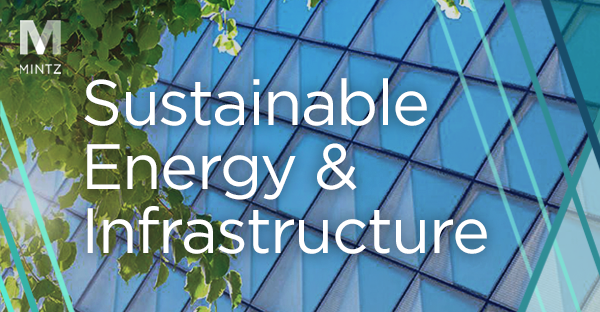Texas Legislators Propose Onerous Permitting Requirements for Wind and Solar Renewable Energy Facilities
Introduction
Historically, Texas has maintained relatively relaxed permitting requirements for energy generating facilities compared to other states. In recent years, state and federal subsidies, coupled with this favorable regulatory climate, have spurred growth in renewable electricity generation in Texas. Texas is the nation’s largest net generator of electricity. The Electric Reliability Council of Texas (ERCOT), the state’s electric grid operator, reported that electricity generated by solar and wind accounted for 28 percent of all energy use in Texas in 2021.
In spite of this promising outlook for solar and wind renewable energy generation in Texas, companion bills proposed in the state’s legislature earlier this year – House Bill 3707 and Senate Bill 624 – now threaten to undermine the growth of wind and solar energy production in the state and thereby, more broadly, the federal goals for renewable energy investment and greenhouse gas emission reductions. This legislation has the support of both Texas Governor Greg Abbot and Lt. Governor Dan Patrick.
In response to the growing role of renewables in the state, Texas HB 3707 and SB 624 each take aim at the permitting requirements for certain renewable energy facilities. As a part of the proposed legislation, developers and operators of solar and wind plants would be required to obtain a full environmental inspection of their facilities, comply with expanded public notice requirements, face greater confidentiality risks, and pay higher fees. The summary below provides an overview of the key aspects of the proposed legislation.
Proposed Legislation: HB 3707 and SB 624
Status and Procedural Path to Passing
SB 624 was introduced in the Texas Senate on January 26, 2023 by Sen. Lois Kolkhorst (R – District 18), Sen. Mayes Middleton (R – District 11), and Sen. Bryan Hughes (R – District 1). The Senate passed the proposed legislation on April 24, 2023 and sent it to the House for consideration. Companion HB 3707 was introduced in the Texas House on March 6, 2023 by Rep. Jared Patterson (R – District 106). The proposed bill was read once and thereafter referred to the House State Affairs Committee as of March 20, 2023.
With the Senate’s passage of SB 624, its review in the House may be expedited, given that the Senate bill is identical to HB 3707 as initially drafted. HB 3707 is pending committee review prior to the second of three required readings. Floor consideration of a bill begins on the second reading, where the bill is first subject to debate and amendment by the entire membership of a chamber. Following a more-restrictive third reading, a simple majority vote is taken in the originating chamber to determine final passage. If passed, the bill is engrossed (meaning all corrections and amendments are incorporated into it) and sent to the opposite chamber for consideration.
The current Texas legislative session runs through May 29. If passed by both chambers, this legislation would become effective on September 1, 2023.
Proposed Legislation Targets Future and Existing Wind and Solar Facilities
The proposed legislation would impact solar and wind energy generators in the state. The bills omit other types of generation facilities, such as facilities generating power by burning fossil fuels.
In addition to future projects, the new permitting requirements would also apply retroactively to all existing renewable energy generation facilities present at the effective date of the legislation. These include facilities already producing energy, interconnected to transmission facilities, or under construction, as well as all pending projects. Further, facility owners would be required to apply for amended permitting prior to any alterations to their operating facilities, like renovations or expansions.
The bills would allow those currently operating or constructing facilities to continue doing so after the effective date while they apply for a permit. Outside of this initial grace period, however, all changes to a facility’s operations would require approval before implementation.
Onerous Permitting Requirements
The bills would require anyone operating a renewable energy generation facility to obtain a permit from the Public Utility Commission of Texas (“PUCT”). As part of establishing the permitting process, the PUCT would formulate a system for evaluating and funding environmental impact assessments of renewable energy generation facilities under which the Texas Parks and Wildlife Department would produce an environmental impact statement (“EIS”). The EIS would entail an inspection of the environmental footprint of the operating facility, resulting in a summative environmental impact score. The legislation delegates final authority to the PUCT to determine the procedure and criteria used to arrive at an environmental impact score, which may include a project’s impact on natural resources, the conservation of wildlife and wildlife habitat, and any interference with agricultural best practices in the area. The legislation authorizes the PUCT to impose fees upon an applicant to cover the costs of producing and administering the EIS. The PUCT would ultimately provide the EIS to the applicant for inclusion in the permit application.
Application materials, which include a description of the facility, copies of any wind or solar private agreements for the facility, and the EIS would be sent by the applicant to the PUCT permitting office for a final determination on the merits of the application. Notably, fossil fuel–powered generation facilities would not be required to undergo any similar environmental review under the bills.
Once issued, permit holders must ensure that facilities are located at least 500 feet away from any property line and 1,000 feet from any habitable structure (unless a waiver is obtained). Additionally, permit holders must maintain a public website for the facility detailing information on the location and management of the facility. The proposed legislation leaves open the door for the PUCT to introduce additional conditions for compliance or alter the rules set forth in the legislation.
Public Notice Requirements
After a permit application is submitted to the PUCT, the PUCT would provide notice of the application to affected parties listed within the application. According to the proposed bills, affected parties encompass all persons in possession of property within 25 miles of the boundary of the proposed facility. Any such property owner could subsequently request a public hearing on the application, thereby publicizing certain project details.
Any application involving a facility larger than 15 megawatts would require notice to the county judge for any county within 25 miles of the boundary of the proposed facility, if such a judge has requested in writing that the PUCT provide notice.
Regardless of whether a hearing has been requested, the PUCT cannot take any action or begin any review of the permit application for 30 days after public notice is given. Thus, these public notice requirements will generate further delays for applicants.
New Fees for Removal of Wind and Solar Facilities
The proposed legislation gives the PUCT broader powers to remove wind and solar facilities but does not specify the circumstances that would require facility removal. An annual environmental impact fee (amount unspecified) would be imposed on each permit holder, and all revenues collected from such fees would be placed into a renewable energy generation facility cleanup fund (the “Cleanup Fund”). Of such revenues, 20 percent would be designated for use only for the removal of renewable energy generation facilities and restoration of the real property on which facilities are located. The Cleanup Fund may also be funded by private contributions and legislative appropriations. Further, the Cleanup Fund may only be used by the PUCT to implement the provisions of the proposed legislation. Additionally, the proposed legislation gives the PUCT authority to determine whether the Cleanup Fund is sufficiently funded. If the PUCT determines that the Cleanup Fund is sufficiently funded, the PUCT may instead allocate 20 percent of the revenues from the environmental impact fees to the state’s county and road district highway fund.
Notably, the PUCT already has rules requiring that owners of wind and solar facilities operating on leased land provide financial assurances to the landowner as to the landowner’s ability to remove the equipment and restore the property to its original condition at the end of the facility’s useful life. While the proposed legislation suggests that the Cleanup Fund will be used to remove energy generation facilities, the Cleanup Fund would only be drawn upon in circumstances where the operator has not removed such facility as otherwise required. Where the PUCT elects to remove a facility, it would draw on the Cleanup Fund to fund the removal of such facility. Still, the PUCT could require the permit holder of the facility to reimburse the PUCT for those costs associated with removal of the facility, or at the request of PUCT, the Attorney General could file suit against the permit holder to recover the costs. Costs recovered would be deposited into the Cleanup Fund.
Future of Renewable Energy Development in Texas at Risk
In addition to HB 3707 and HB 624, several other energy-related bills were approved on April 5, 2023 by the Texas Senate and are now with the House. These bills include:
- Senate Bill 6 – which proposes to allocate $10 billion to build new natural gas power plants.
- Senate Bill 7 – which proposes ancillary services fees on solar and wind energy companies.
- Senate Bill 1287 – which proposes a new transmission fee.
- Senate Bill 2012 – which proposes requirements for renewable energy companies to subsidize construction of new fossil fuel plants.
- Senate Bill 2015 – which proposes requirements for renewable energy companies to subsidize construction of new fossil fuel plants.
In light of HB 3707 and SB 624 and the other energy-related bills listed above, as well as the support of the Texas Governor’s office for HB 3707 and SB 624, stakeholders must take seriously the prospect that HB 3707 and SB 624 may pass. These bills have the capacity to hobble existing wind and solar facilities in Texas while effectively maintaining (and expanding) fossil fuel power generation within the state. Further, the proposed legislation threatens to hinder the development and financing of new renewable energy facilities and limit the opportunities for project developers, sponsors, and owners to take advantage of Inflation Reduction Act subsidies in Texas.
Additional Contacts
 | Ayaz R. Shaikh |
 | Gregg M. Benson |
 | Kristopher L. Kirkwood |
Authors




